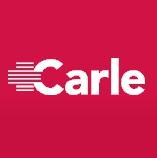SERVICES
Pharmacomechanical Thrombolysis
Pharmaco-mechanical thrombolysis is a 30-minute outpatient procedure that is used to remove clots located in the deeper veins of the body. The technique uses two modalities: application of clot-dissolving agents directly to the clot and mechanical maceration to help break the clot apart. The mechanical motion also allows for a more thorough dispersion of the clot-dissolving agent, helping to soften the clot and prepare it for removal.
Traditional thrombolysis techniques rely solely on the use of these clot-dissolving agents to slowly dissolve clots over several hours to several days. By contrast, pharmaco-mechanical thrombolysis can remove clots within a few moments, requiring far less potentially harmful clot-dissolving agents than traditional thrombolysis. As a result, recovery is shorter with pharmaco-mechanical thrombolysis and the technique is associated with a lower risk of bleeding and other complications.
The pharmaco-mechanical thrombolysis technique itself is usually performed under sedation and begins with the insertion of a long, flexible catheter into the vein that contains the clot. The catheter is advanced through the vein until it emerges on the far side of the clot.
Tiny balloons located on either side of the clot inflate to securely partition the clot from the rest of the bloodstream. Once these tiny balloons are successfully inflated, clot-dissolving agents can be safely administered directly to the area and the clot is mechanically broken down into tiny pieces. These tiny bits are blown out through the hollow end of the catheter. After the material is cleared, the balloons are deflated and the catheter is removed from the body. Recovery is brief, and most individuals can resume normal activity shortly after the procedure.
